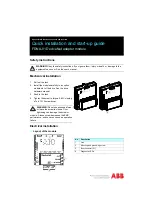
Product Specifications
R
Intel
®
848P Chipset Thermal Design Guide
11
2.3.1 Methodology
2.3.2 Application
Power
Designing to the TDP can ensure a particular thermal solution can meet the cooling needs of future
applications. Testing with currently available commercial applications has shown they may dissipate
power levels below the published TDP specification in Section 2.3.3. Intel strongly recommends that
thermal engineers design to the published TDP specifications to develop a robust thermal solution
that will meet the needs of current and future applications.
2.3.3 Specifications
The MCH dissipates the configuration specific Thermal Design Power value provided in
Table 2. Note that actual power dissipated may differ from part to part due to normal manufacturing
process variability. The leakage power of the device will vary from unit to unit. The TDP values
account for leakage variation from unit to unit and system designers should design to the TDP
specifications in Table 2. As a manufacturing process improves and the circuit density increases, the
leakage power of the device increases. In general, the leakage is lower for the initial silicon than it is
at the end of the product’s life.
FC-BGA packages have minimal heat transfer capability into the board and therefore have minimal
thermal capability without thermal solutions. Intel requires that system designers plan for an attached
heatsink when using the MCH.
Table 2. Intel
®
82848P MCH Thermal Design Power Specifications
Configuration TDP
Value
Single-channel / 2 DIMMs / 400 MHz DDR / 800 MHz FSB
8.1 W
2.4 Mechanical
Specifications
Heatsinks that attach to the MCH via a retention mechanism should exert a load within the maximum
static load specification listed in Table 3. During heatsink installation, care should be taken to avoid
rocking the heatsink on the package die or exceeding the maximum transient compressive load in
Table 3.
Table 3. MCH Mechanical Specifications
Parameter Value
Notes
Maximum Static Compressive Load
133.4 N [30 lbf]
1
Maximum Transient Compressive Load
178 N [40 lbf]
2
NOTES:
1. A compressive load is defined as a uniform load applied normal to the die surface (downwards)
2. A transient compressive load is defined as a uniform load applied normal to the die surface (downwards)
temporarily during heatsink installation.
Содержание 848P
Страница 6: ...R 6 Intel 848P Chipset Thermal Design Guide This page is intentionally left blank ...
Страница 12: ...Product Specifications R 12 Intel 848P Chipset Thermal Design Guide This page is intentionally left blank ...
Страница 16: ...Thermal Metrology R 16 Intel 848P Chipset Thermal Design Guide Figure 4 TMTV Daisy Chain Structure ...
Страница 20: ...Thermal Metrology R 20 Intel 848P Chipset Thermal Design Guide This page is intentionally left blank ...
Страница 32: ...Appendix B Mechanical Drawings R 32 Intel 848P Chipset Thermal Design Guide Figure 14 MCH Package Drawing ...












































